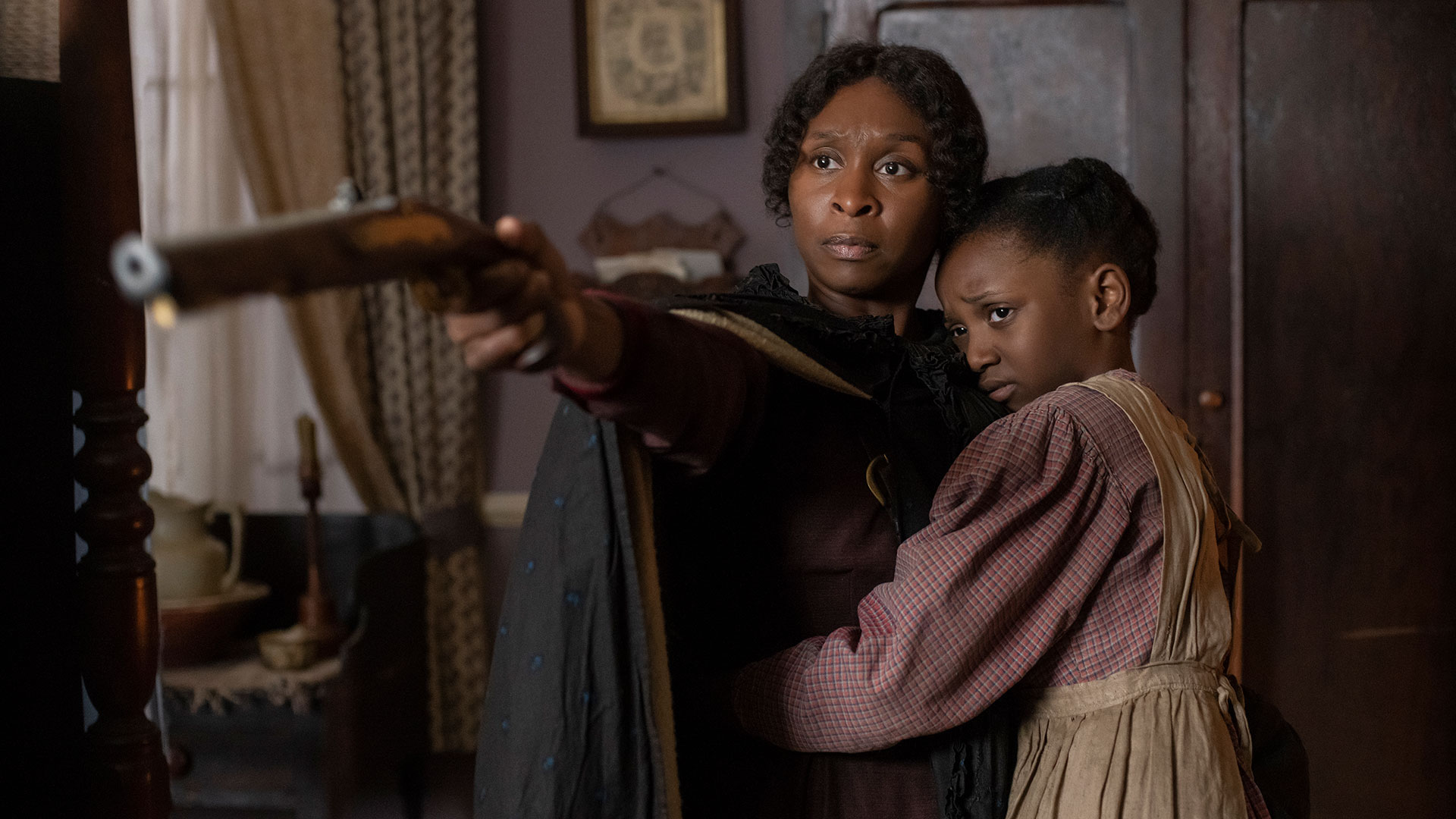The heroism of abolitionist Harriet Tubman in the context of pre-Civil War adversity is so powerful that it needs little adornment. The filmmakers chronicling her life in a new biopic, currently in theaters, sought as authentic a treatment as possible.
Harriet follows Tubman on her 1849 escape from slavery and subsequent missions to free dozens of slaves through the Underground Railroad. This extraordinary yet seemingly powerless woman is one of the few — even to this day — to have led an armed expedition in U.S. history, and she remains a source of national courage in the fight for emancipation.
Kasi Lemmons (Talk to Me, Eve’s Bayou) directs from the screenplay she co-wrote with Gregory Allen Howard. Cynthia Erivo, Tony Award-winner for The Color Purple, takes the lead with support from Leslie Odom Jr. and Joe Alwyn.
“The look of the film is very naturalistic,” notes Harriet cinematographer John Toll, ASC. “We wanted to take advantage of the landscape and geography where Harriet actually lived, to ground the story in an authentic feel and look.”
Toll, who won back-to-back Oscars for Legends of the Fall and Braveheart and earned a third nomination for The Thin Red Line, has an unrivaled track record in rendering period drama to the screen. “I didn’t need to go out of the way to create a period look,” he says. “Once you put actors in costume and in the right environment, you pretty much know what it would have looked like at the time. The aim was to use all the natural elements of the location without filtration or augmentation, which would risk distracting from the story by appearing too modern.”
Harriet was filmed entirely on location in Virginia during an uncharacteristically wet fall of 2018, which required the cast and crew to work through grueling conditions — many sequences were shot in the woods with the actors and filmmakers having to contend with rain, wind, mud and insects.
“My preference was to go digital for this film, for practical reasons, but also because I don’t subscribe to the idea that telling a period story necessitates film,” Toll says.

B camera operator Kim Marks (left) and cinematographer John Toll
Glen Wilson / Focus Features
The practical reasons included working to a low budget and a tight 35-day schedule for a shoot that required a significant number of night exteriors. Settings also included fields, swamps, and forests. “We had a lot of scenes in wooded areas. That’s an environment that can easily suck up the light, so I needed a camera with high sensitivity.”
Toll enlisted Panavision in New York for his camera package, which included the Sony Venice. He tested Panavision lenses including the H series and Artiste before selecting a set of Panavision Sphero 65 lenses 24–180, which lend the digital image a softer, classical look.
“Shooting digital allowed us a certain level of efficiency. We didn’t have the luxury of coming back the next day, so we had to hit it first time out. And we didn’t have to sacrifice anything in terms of overall look with this combination of camera and lenses.”

Cynthia Erivo (left) and Vondie Curtis-Hall
Glen Wilson / Focus Features
The production was rooted in extensive research. It helped that the Civil War era marked the advent of photography with daguerreotypes of the 1840s, which provided evidence for costume and set design. There are even daguerreotypes of Tubman herself, although they were taken after she had led slaves out of bondage.
Properties on the Berkeley Plantation, a National Historic Landmark, served as both the Brodess Plantation — where Tubman was enslaved — and the home of New York Governor William Seward, in the film. “We shot practical exteriors and interiors of the farmhouse which contains fewer and smaller windows than modern buildings,” Toll explains. “Even at midday the interiors were quite dark.”
The restriction of budget and time was almost an attribute, Toll adds. “We were all determined to make this film.”

Left to right: B Camera operator/1st AD Dwight Campbell, B Camera operator Kim Marks, 1st AD Michele Panelli-Venetis, cinematographer John Toll and director Kasi Lemmons.
Glen Wilson / Focus Features
Toll first met Lemmons at Sundance where both were acting as advisers to aspiring filmmakers. “She told me about Harriet, which she was in process of developing, and the idea piqued my interest. Even based on our short experience together, I really liked the idea of working with her. I knew of Harriet Tubman but not everything involved in her story. Her accomplishments are incredible, especially set in historical context.”
Harriet had a diverse crew, leaning heavily on women and people of color. In addition to Lemmons, two of the producers are female. “This was a highly motivated group of filmmakers,” Toll says. “Kasi inspired that as much as with the story we were telling. It was like Harriet herself was with us the whole time. It felt very collegiate. Everybody showed up for the right reasons and worked extremely hard.”
There can be fewer greater contrasts for Toll than switching from Harriet to preparations for his next project, The Matrix 4. “That’s half the fun of being a cinematographer,” he says, smiling. “The variety keeps you on your toes.”
Crafts: Shooting
Sections: Creativity
Topics: Project/Case study Q&A john toll Panavision Sony sphero 65 venice
Did you enjoy this article? Sign up to receive the StudioDaily Fix eletter containing the latest stories, including news, videos, interviews, reviews and more.









